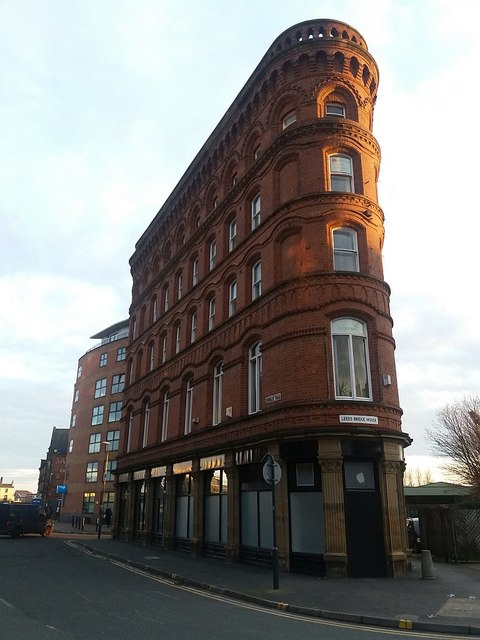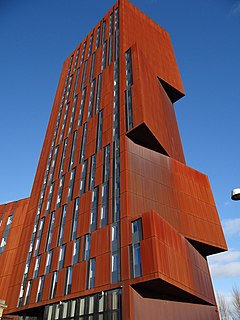I am going to do research into the city of Leeds, in order to gain inspiration and any ideas I can use within the design of the publication.
The Borough of Leeds was created in 1207, when Maurice Paynel, lord of the manor, granted a charter covering a small area adjacent to a crossing of the River Aire, between the old settlement centred on Leeds Parish Church to the east and the manor house and mills to the west. In 1626 a charter was granted by Charles I, incorporating the entire parish as the Borough of Leeds; it was reformed by the Municipal Corporations Act 1835.
The district and its settlements are situated in the eastern foothills of the Pennines astride the River Aire whose valley, the Aire Gap, provides a road and rail corridor that facilitates communications with cities to the west of the Pennines.
The Coat of arms of Leeds City Council derives its design from the seventeenth century:
- The coat of arms dates to the 1660s.
- Three stars taken from the coat of arms of Sir Thomas Danby who was the first Mayor of Leeds.
- The (golden, by the top left image) fleece, a sign of the wool stapler, symbolises the wool industry in the city.
- Three owls taken from the coat of arms of Sir John Savile who was the first Alderman of Leeds.
- The closed steel helmet is used by civic authorities.
- The Latin motto, Pro Rege et Lege, means "For King and the law". Its motto is similar to the original used by the Australian capital of Canberra, which was granted its arms in 1928.
There are three owls on Leeds City Council's coat of arms, enormous golden owl statues outside Civic Hall and sculptures and paintings of the nocturnal birds at 24 other locations around the city, which are part of the Leeds Owl Trail.
It all started with Sir John Savile, the first Alderman of Leeds. The Frenchman's family arrived in the UK after they were given a huge areas of land in Yorkshire by William the Conqueror, because they supported him in the Battle of Hastings in 1066. He decided to include owls when he designed his coat of arms, but it is not clear why. Some people think he chose them because of the Greek goddess Athena, who was often depicted as an owl. While others think he just liked owls.
I am going to suggest to Hannah that she incorporates the owl in any logo and icon designs she produces for the publication.
You would never guess it, but Leeds was once inhabited by a ‘hippopotamus’. In 1851, the remains of a great northern hippo was discovered in Armley, Leeds. Dating back over 100,000 years the bones are in Leeds City Museum for all to see now.
If you are a Harry Potter fan you will be excited to know that Leeds has its very own Quidditch team. Students of Leeds University have developed the game to be played on foot (rather than brooms). Known as the ‘Leeds Griffins’.
The iconic Temple Mill building in Holbeck was once home to a flock of sheep, who were kept there to maintain the grassy roof, which was in turn used to maintain a level of humidity in the building itself, which in turn kept the wool yarns from separating.
The first moving picture was filmed in Leeds in 1888 by Louis Le Prince. He based the film on a back garden in Leeds. Although, his film is noted in the Guinness world records as the oldest moving film, he vanished a couple years after the film was produced and so never was able to reap the awards of his accomplishment.
The Blackburn Type D is the oldest flying aeroplane in Britain and it was made right here in Leeds. Robert Blackburn built his one seat monoplane for Cyril Foggin in 1912, just a decade after the Wright Brothers’ famous first flight.
Back in 1884, Michael Marks opened up a penny bazaar stall in Leeds Kirkgate Market. A decade later, he enlisted the help of Tom Spencer to grow the business and they went from strength-to-strength. Soon after, M&S moved to a permanent spot just around the corner in the Market.
They don’t make cinemas quite like they used to – and the Hyde Park Picture House is the perfect example. It opened in 1914, just before World War One broke out, and is the last surviving gas-lit cinema in the UK. It retains many of its original features, like the external ticket booth, barrel-vaulted ceiling and ornate balcony, which makes it quite the setting to watch the latest films.
In 1879, The Temperance Hotel, or Leeds Bridge House as it’s now known, was built just on the South side of Leeds Bridge – and though many say it takes inspiration from the Flat Iron Building in New York, it actually preceded it by 23 years.
The city is home to England’s most Northern commercial vineyard, in the village of Leventhorpe. On a low-altitude, South facing site, they grow their grapes on a low-altitude, south-facing stretch of land and then use them to make wine just a few yards away.
Everyone talks about Notting Hill, but the Leeds West Indian Carnival has been going for longer – in fact, it’s the longest running West Indian carnival in Europe. It’s been a part of the city’s cultural calendar since 1967 and it’s still going strong with one of the most colourful, energetic parades you’re ever likely to come across, complete with dancing, live music and street food.
Visual research:





.jpg)




No comments:
Post a Comment